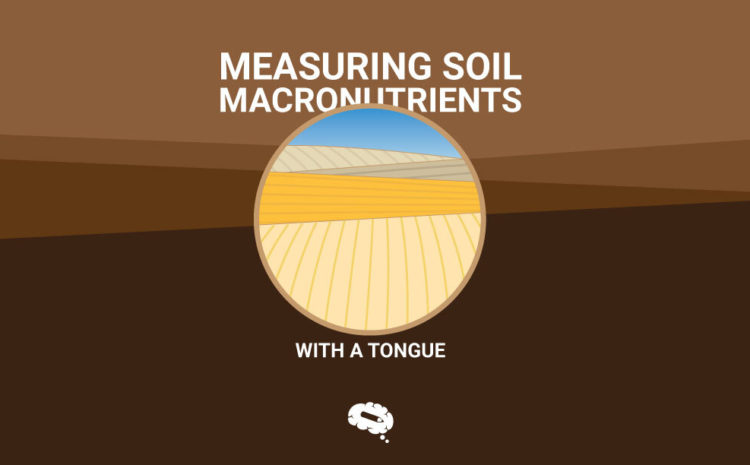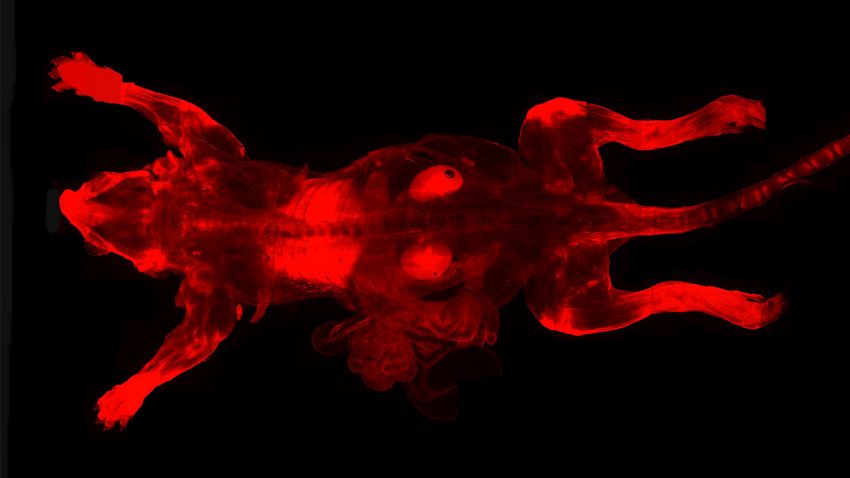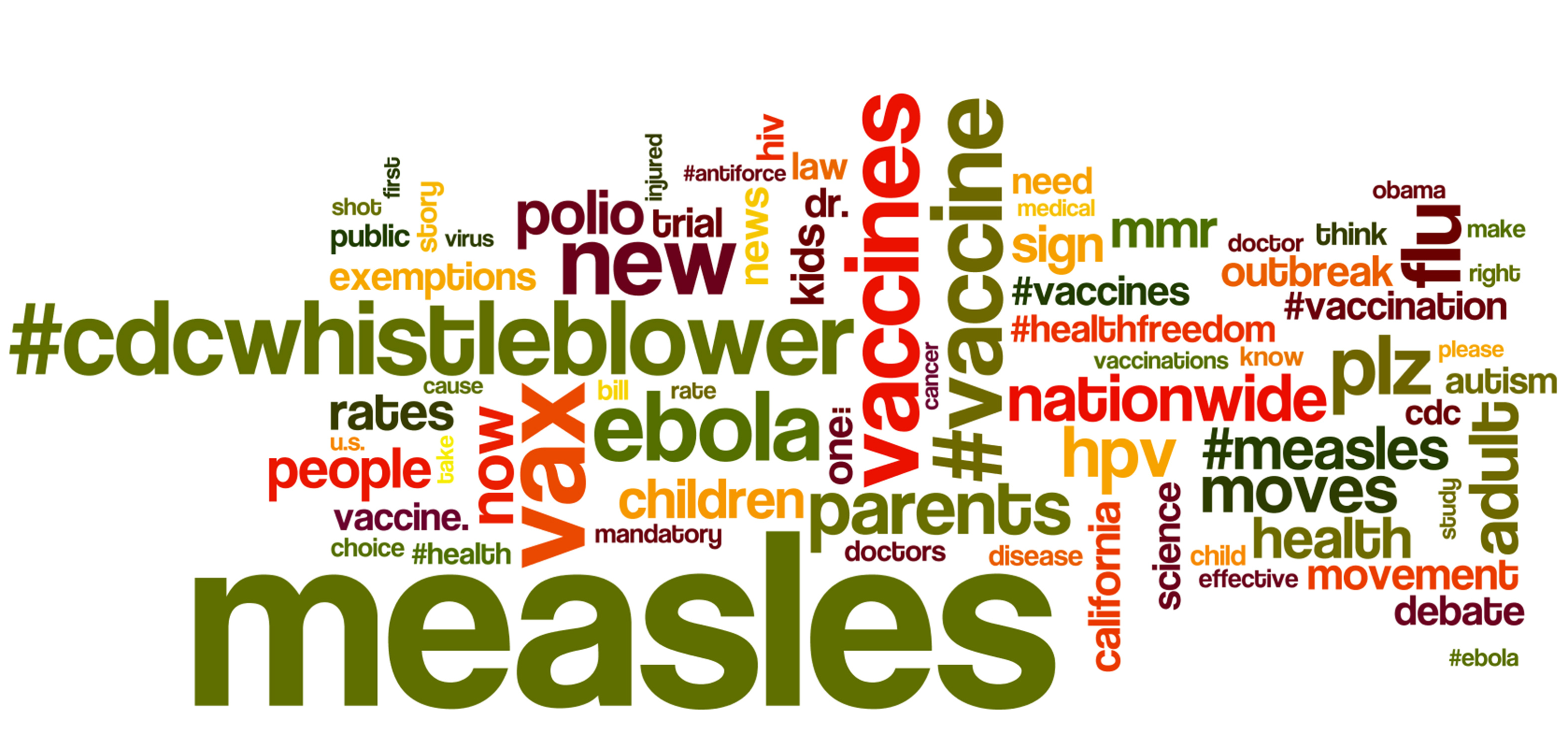How to measure macronutrients in the soil?
Fortunately, no one needs to lick soil to measure the nutrients present in it.
Scientists like Dr. Maria L. Braunger and Dr. Antonio Riul Jr are working on an electronic tongue to do that. Both researchers are developing new strategies and devices to deal with nutrients measurement on the soil.
But how does this device work and why is there a demand to measure soil nutrients?
As Dr. Braunger and Dr. Riul said in their work: “The growing world demand for food without increasing the productive area requires better use of agricultural and natural resources, which implies that the development of better tools for precision agriculture should avoid excessive use of pesticides and fertilizers. Within this context, high-detailed information for soil characterization is important for soil management and crop productivity when dealing with precision agriculture.”
What you need to know
When growing vegetables, mineral nutrients are required to ensure crop development.
There are two types of mineral nutrients, micronutrients, and macronutrients, this division does not correlate with greater or lesser essentiality, but with the amount needed by the crop.
Check out Mind the Graph Gallery for illustrations related to soil. Click on the image below!
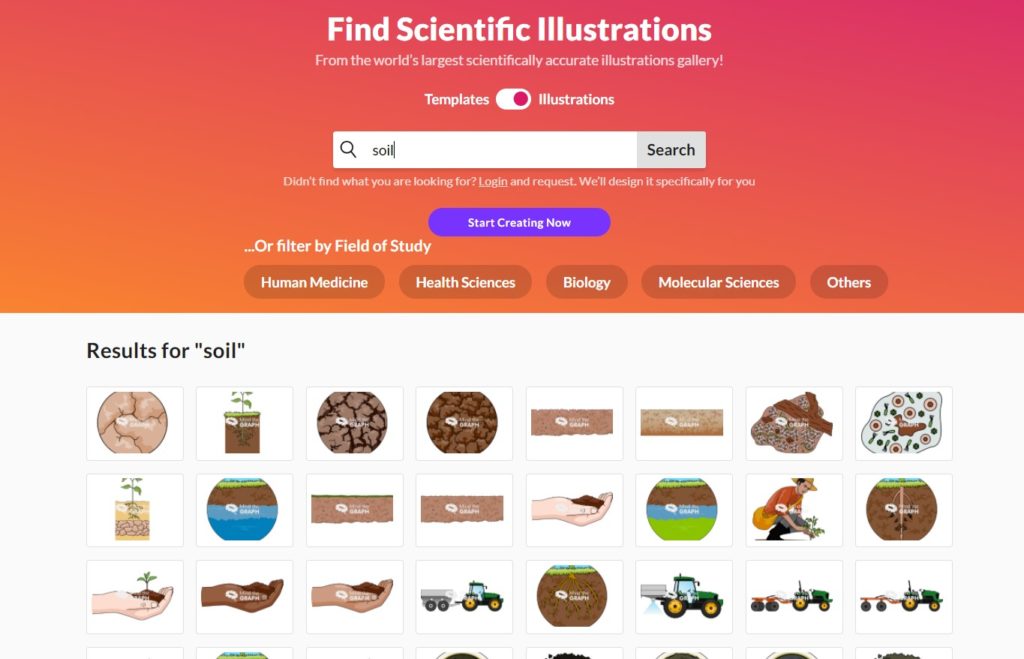
One explanation for macronutrients being required in high amounts is the fact that they display a structural role, are present in the small parts of DNA (deoxyribonucleic acid) and RNA (ribonucleic acid), in enzymatic activation, and photosynthesis.
Six chemical elements are considered Macronutrient minerals: Nitrogen (N), Phosphorus (P), Potassium (K), Calcium (Ca), Magnesium (Mg), and Sulfur (S).
Precision agriculture stands for having the right quantities of Macronutrients and Micronutrients in the soil, and the authors state the importance of maintaining healthy soil.
This approach of agriculture will consider all the data available to improve the efficiency, productivity, and sustainability of rural production. The vegetables have different needs and the soil should provide them with all nutrients necessary to allow healthy growth. But the amount of nutrients is not visible for the human eye on the soil and, therefore, it needs to be measured.
Today’s technology measures the soil nutrients by sending samples to a specialized laboratory for slow and expensive chemical analysis. The author’s electronic tongue (e-tongue) is a state-of-the-art device that promises shortly a local, fast, and cheap analysis.
But what is an e-tongue and how it tastes the soil?
The human taste perception involves taste buds detecting salty, sour, bitter, sweet, and umami flavors. Taste receptor cells in the taste buds are responsible to react with ions present in foodstuff dissolved in saliva.
The cells send to the brain immenseness electrical information about the taste.
E-tongue is a device mimicking the human counterpart, and it is generally composed of an array of sensing units simulating the taste buds. Briefly, when immersed in a liquid the sensing units can feel variations in the external environment through changes in their electrical characteristics.
The device
To measure a soil sample, the soil should be solubilized in water and passed through a four-sensor array.
The sample acts as a dielectric medium and the sensor as a parallel plate capacitor. Ions present in the sample passing through the sensor array change the impedance differently, according to the electrical nature of the materials forming each sensing unit.
The difference in the electrical response generates a fingerprint of the analyzed sample. The capacitive impedance data of a sensor is acquired by a frequency sweep between 1 Hz and 1 MHz of a sinusoidal signal with 25 mV of amplitude.
Considering the variation of all sensing units together and applying a mathematical treatment, it is possible to have a point of measurement for a sample in a 2D plane plot.
The next challenge
So far the e-tongue might have a qualitative response, and the challenge nowadays is a quantitative measurement of how much potassium (for example) is present in a soil sample.
An alternative is to have a standard soil (rich in potassium, for example) and the method will say how far the sample is from that standard, estimating the potassium quantity in the soil sample. Having a standard for each macronutrient makes it possible to check if a sample is too close or too far (poor or rich, respectively) from each one.
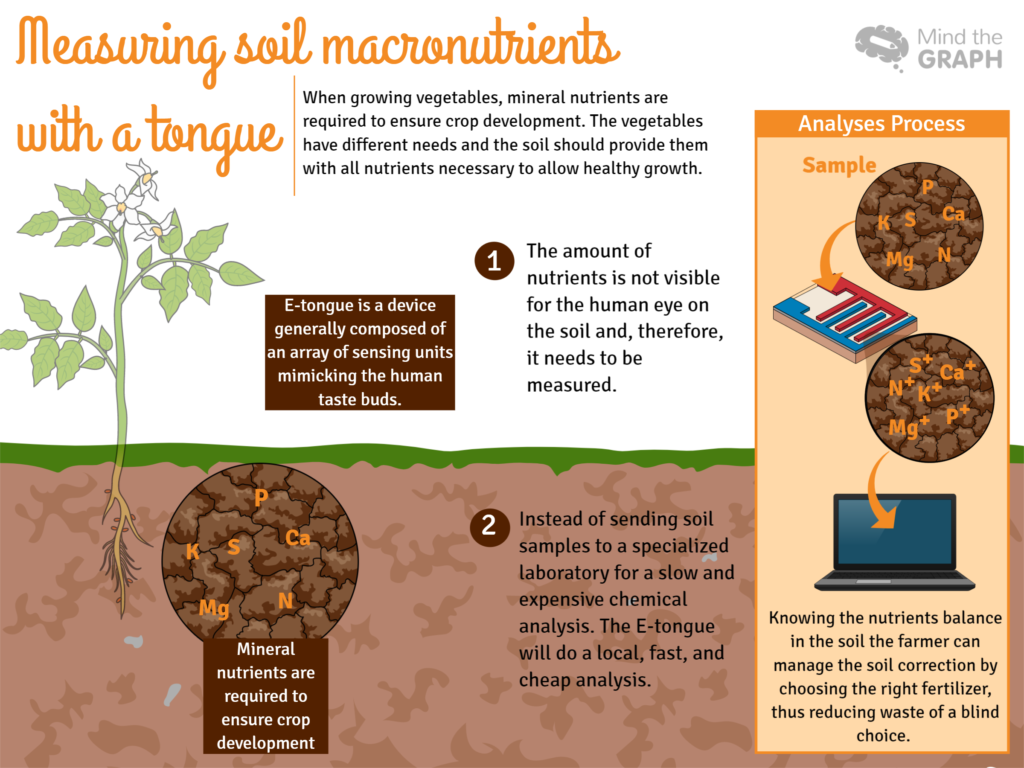
Having the e-tongue response and thus knowing the balance of nutrients in the soil allows a farmer to manage the soil correction by choosing the right fertilizer at a specific region, thus reducing the waste of a blind choice.
Reducing waste and improving productivity is the aim of precision agriculture, and with this device, Dr. Braunger and Dr. Raul want to assist precision agriculture with a device low-cost, simple, rapid, and used on-site. We hope to have soon e-tongues helping farmers in the agriculture of the future.
____________
As Dr. Braunger and Dr. Raul are helping farmers, Mind the Graph can help you to prepare a paper or presentation with lots of illustration categories where you can find everything you need.
And we are here to help you if you need anything else, just login into your account and send us a message in the REQUEST AN ICON.

Subscribe to our newsletter
Exclusive high quality content about effective visual
communication in science.

